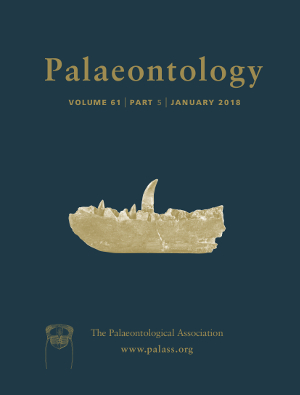Reg. Charity No. 1168330

The present distribution of lizards is usually explained as a result of relatively recent global events, i.e. faunal turnovers or exchanges within and between particular continents mostly connected with glaciations and land‐bridges. However, today's disjunct distribution of the North American Xantusiidae and African Cordyliformes (close relatives of skinks) does not fit generally accepted biogeographical patterns. A new, exquisitely preserved specimen of the Late Jurassic lizard Ardeosaurus brevipes from the Solnhofen area, Germany sheds some light on the problem. A posterior projection of its parietal is known only in the Dibamidae, Gekkota and Scincoidea, taxa representing first branches on the molecular tree of lizards. The projection of the parietal is proposed to be an apomorphy of the Squamata that was lost in the common ancestor of Lacertoidea and Toxicofera (snakes, anguimorphs and iguanians). This implies a basalmost position of A. brevipes on the Squamata tree. The location of the supratemporal such as in A. brevipes characterizes all the Scincoidea and some geckos, but most geckos lack osteoderms, which are common in Scincoidea. This makes A. brevipes the oldest known crown‐member of this lineage. Moreover, this indicates that the main groups of modern lizards were already present in the Jurassic. Ancestors of Cordyliformes migrated to Gondwana in the Late Jurassic together with dinosaurs, prior to the Cretaceous separation of this ancient continent.